How AWS SOC 2 Compliance Enhances Trust and Security for Your Business
- Nitin Yadav
- Knowledge
About
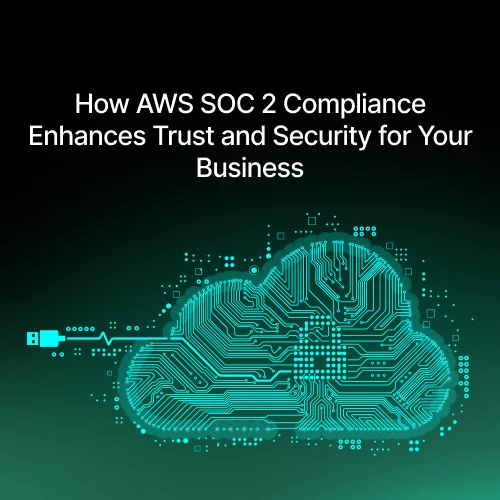
AWS SOC 2 compliance enhances security, ensures regulatory compliance, and builds customer trust by implementing strict security controls and continuous monitoring.
Industries
- AWS Compliance and Risk Management, AWS SOC 2 Compliance, Cloud Security Best Practices, Data Security and Regulatory Compliance
Share Via
Introduction
Why is Cloud Security and Compliance Crucial for Businesses Today?
In an era where cyber threats and data breaches are on the rise, businesses must prioritize cloud security to protect sensitive customer data. With increasing regulatory requirements and consumer expectations around data privacy, organizations must ensure their cloud infrastructure meets the highest security standards. Failing to comply with security regulations can lead to data loss, reputational damage, and hefty fines, making compliance an essential aspect of business operations.
What is AWS SOC 2 Compliance and Why is It Important?
AWS SOC 2 Compliance is a security framework developed by the American Institute of Certified Public Accountants (AICPA) that assesses how cloud service providers manage customer data. This compliance standard is built around five Trust Service Criteria (TSC): security, availability, processing integrity, confidentiality, and privacy. Businesses leveraging AWS can rely on its SOC 2 compliance to demonstrate their commitment to data security and regulatory adherence.
How AWS’s Adherence to SOC 2 Standards Ensures Trust and Security for Businesses
AWS undergoes independent third-party SOC 2 audits to validate its security controls, ensuring that its infrastructure aligns with industry-best security practices. By adopting AWS SOC 2-compliant services, businesses can:
- Strengthen Security Posture: Protect customer data through robust encryption, access controls, and real-time monitoring.
- Build Customer Trust: Demonstrate a commitment to data protection, leading to stronger client relationships.
- Ensure Regulatory Compliance: Align with global compliance frameworks like GDPR, HIPAA, and ISO 27001.
- Mitigate Security Risks: Proactively detect and prevent cyber threats with AWS’s advanced security tools.
Understanding AWS SOC 2 Compliance
What is SOC 2?
SOC 2 (Service Organization Control 2) is a security and compliance framework developed by the American Institute of Certified Public Accountants (AICPA). It evaluates how cloud-based organizations handle and safeguard customer data, ensuring that security measures align with industry standards.
Unlike SOC 1, which focuses on financial controls, SOC 2 is centered around security, availability, processing integrity, confidentiality, and privacy—collectively known as the Trust Service Criteria (TSC).
SOC 2 vs. Other Compliance Standards
While SOC 2 is a crucial security standard, businesses must also comply with other regulatory frameworks. Here’s how SOC 2 compares:
- SOC 2 vs. ISO 27001: SOC 2 focuses on service provider security, while ISO 27001 is a broader information security management system (ISMS) standard.
- SOC 2 vs. GDPR: SOC 2 ensures data security, whereas GDPR ensures compliance with European privacy laws.
- SOC 2 vs. HIPAA: HIPAA governs healthcare data protection, while SOC 2 applies to all industries.
- SOC 2 vs. PCI-DSS: PCI-DSS focuses on credit card transactions, while SOC 2 secures broader cloud-based infrastructures.
AWS and SOC 2: Why It Matters for Cloud-Based Businesses
AWS undergoes regular SOC 2 audits to validate its adherence to security best practices. This benefits businesses in several ways:
- Ensures Compliance: Organizations using AWS services can inherit SOC 2 compliance to meet regulatory obligations.
- Data Security Assurance: AWS offers built-in security features like IAM (Identity and Access Management), AWS Shield, and CloudTrail for monitoring and protection.
- Reduces Compliance Complexity: AWS provides compliance-ready environments, eliminating the need for businesses to build security frameworks from scratch.
The 5 Trust Service Criteria (TSC) in AWS SOC 2 Compliance
1. Security: Protection Against Unauthorized Access
AWS implements firewalls, intrusion detection systems, and multi-layered encryption to prevent unauthorized access.
Key AWS security features:
# Example AWS IAM Policy to Restrict Access
{
"Version": "2012-10-17",
"Statement": [
{
"Effect": "Deny",
"Action": "*",
"Resource": "*",
"Condition": {
"Bool": {
"aws:SecureTransport": "false"
}
}
}
]
}
2. Availability: Ensuring AWS Services Remain Operational
AWS guarantees high availability through multi-region backups, automated failover mechanisms, and DDoS mitigation tools.
- AWS Auto Scaling ensures uptime by dynamically adjusting resources.
- AWS Route 53 enables traffic redirection in case of system failure.
3. Processing Integrity: Data Processing Accuracy and Reliability
AWS ensures accurate and reliable data processing through:
- AWS CloudTrail: Logs every event in AWS accounts.
- AWS Config: Continuously monitors and records configuration changes.
- Amazon S3 Object Lock: Prevents accidental deletion of critical data.
4. Confidentiality: Protection of Sensitive Information
To ensure data confidentiality, AWS implements:
- End-to-End Encryption (E2EE): Encrypts data at rest and in transit using AWS Key Management Service (KMS).
- Strict Role-Based Access Controls (RBAC) to limit data exposure.
Example Encryption Policy:
resource "aws_kms_key" "example" {
description = "AWS KMS key for encryption"
enable_key_rotation = true
}
5. Privacy: Compliance with Data Protection Policies
AWS aligns with global privacy regulations by:
- Ensuring GDPR compliance with AWS Data Processing Addendum (DPA).
- Providing AWS Shield for protection against data breaches.
- Offering detailed logging and audits to track data processing activities.
How AWS SOC 2 Compliance Enhances Business Trust
1. Builds Customer Confidence
Customers expect cloud platforms to provide secure, reliable services. AWS SOC 2 Compliance assures businesses and their customers that AWS has implemented stringent security measures to protect data. When customers see SOC 2 certification, they gain confidence that their sensitive information is in safe hands.
- AWS’s security-first approach ensures continuous monitoring of data integrity.
- Businesses leveraging AWS’s SOC 2-compliant services can showcase compliance badges, increasing transparency and trust.
- Secure authentication, data encryption, and access controls reduce the risk of unauthorized access.
2. Ensures Regulatory Compliance
AWS SOC 2 Compliance helps businesses align with industry regulations such as GDPR, HIPAA, and ISO 27001. Compliance with these frameworks is essential for companies handling sensitive customer data.
- AWS automates compliance auditing through tools like AWS Audit Manager.
- Businesses can use AWS Artifact to access compliance reports and streamline regulatory filings.
- AWS Shield and WAF ensure compliance with global cybersecurity standards by preventing malicious traffic.
3. Reduces Security Risks
AWS provides continuous monitoring and automated risk assessment through SOC 2-certified security tools.
- AWS GuardDuty detects threats and unusual activity within the cloud environment.
- AWS Security Hub centralizes compliance alerts to ensure businesses stay protected.
- Automated access control through AWS IAM ensures only authorized users can access sensitive data.
By proactively detecting vulnerabilities and mitigating threats, AWS SOC 2 compliance minimizes the risk of security breaches and data leaks.
4. Enhances Vendor Credibility
Companies using AWS services can establish themselves as trusted vendors by demonstrating their adherence to AWS SOC 2 compliance.
- Many enterprises require cloud service providers to meet SOC 2 standards before entering contracts.
- Businesses that operate on AWS SOC 2-certified infrastructure gain an edge over competitors by offering secure and compliant services.
- Organizations can use AWS compliance documentation to showcase security best practices during audits.
Key AWS Services That Support SOC 2 Compliance
1. AWS Identity and Access Management (IAM): Secure Authentication
AWS IAM helps enforce strong authentication and authorization policies to prevent unauthorized access.
# Example AWS IAM Policy to Restrict Access
{
"Version": "2012-10-17",
"Statement": [
{
"Effect": "Deny",
"Action": "*",
"Resource": "*",
"Condition": {
"Bool": {
"aws:SecureTransport": "false"
}
}
}
]
}
- IAM allows businesses to create role-based access control (RBAC) policies.
- Multi-factor authentication (MFA) enhances login security.
- AWS IAM integrates with AWS Organizations to manage security across multiple accounts.
2. AWS Shield & AWS WAF: Protection Against DDoS Attacks
AWS Shield protects against distributed denial-of-service (DDoS) attacks, while AWS WAF filters malicious web traffic.
- AWS Shield Standard provides automatic protection for all AWS services.
- AWS Shield Advanced offers enhanced DDoS mitigation with real-time attack analysis.
- AWS WAF allows businesses to set custom firewall rules to block SQL injection and cross-site scripting (XSS) attacks.
# Example AWS WAF rule to block SQL Injection
{
"Rule": {
"Name": "BlockSQLInjection",
"Priority": 1,
"Statement": {
"SqliMatchStatement": {
"FieldToMatch": {
"Type": "QUERY_STRING"
},
"TextTransformations": [{
"Priority": 0,
"Type": "URL_DECODE"
}]
}
},
"Action": {
"Block": {}
}
}
}
3. Amazon GuardDuty: Threat Detection and Monitoring
Amazon GuardDuty uses machine learning and behavioral analytics to identify security threats in AWS environments.
- Detects unauthorized access attempts, API misuse, and suspicious activities.
- Integrates with AWS CloudWatch to generate real-time alerts.
- Analyzes AWS logs (CloudTrail, VPC Flow Logs, and DNS logs) for anomalies.
4. AWS CloudTrail & AWS Config: Continuous Compliance Auditing
AWS CloudTrail and AWS Config help businesses maintain SOC 2 compliance by tracking changes and auditing activity logs.
- AWS CloudTrail records every API call made within AWS accounts.
- AWS Config tracks configuration changes and ensures security rules are enforced.
# Enable AWS CloudTrail for Continuous Monitoring
resource "aws_cloudtrail" "example" {
name = "my-cloudtrail"
s3_bucket_name = "my-cloudtrail-bucket"
include_global_service_events = true
enable_logging = true
}
Steps to Achieve AWS SOC 2 Compliance for Your Business
Step 1: Conduct a Risk Assessment
A risk assessment is the first step toward achieving SOC 2 compliance. Businesses must identify potential vulnerabilities, access control gaps, and security weaknesses within their cloud infrastructure.
- Use AWS Security Hub to perform a security posture analysis.
- Identify misconfigured IAM roles, open ports, or excessive permissions.
- Conduct penetration testing to simulate real-world attack scenarios.
- Categorize risks based on severity and create an action plan.
Step 2: Implement Security Controls (IAM, Firewalls, Encryption)
Once risks are identified, businesses must enforce strong security controls to mitigate potential threats.
- Identity and Access Management (IAM):
# Restrict access based on roles
{
"Version": "2012-10-17",
"Statement": [
{
"Effect": "Deny",
"Action": "*",
"Resource": "*",
"Condition": {
"Bool": {
"aws:SecureTransport": "false"
}
}
}
]
}
- Firewall Configuration with AWS WAF:
# Define WAF rule to block SQL Injection attacks
{
"Rule": {
"Name": "BlockSQLInjection",
"Priority": 1,
"Statement": {
"SqliMatchStatement": {
"FieldToMatch": {
"Type": "QUERY_STRING"
},
"TextTransformations": [{
"Priority": 0,
"Type": "URL_DECODE"
}]
}
},
"Action": {
"Block": {}
}
}
}
- Encryption:
resource "aws_kms_key" "example" {
description = "AWS KMS key for encryption"
enable_key_rotation = true
}
Step 3: Continuous Monitoring & Logging with AWS CloudTrail
AWS CloudTrail provides an audit trail of all actions performed within an AWS environment, ensuring transparency and security.
# Enable AWS CloudTrail
resource "aws_cloudtrail" "example" {
name = "my-cloudtrail"
s3_bucket_name = "my-cloudtrail-bucket"
include_global_service_events = true
enable_logging = true
}
- AWS Config tracks security rule compliance and alerts on misconfigurations.
- Amazon GuardDuty detects and alerts businesses about unusual activity.
Step 4: Regular Security Audits & Penetration Testing
To maintain compliance, businesses must regularly audit their security policies and test vulnerabilities.
- Perform internal audits using AWS Security Hub.
- Conduct penetration testing to identify potential entry points for attackers.
- Leverage AWS Inspector for automated vulnerability assessments.
- Implement remediation measures based on audit findings.
Step 5: Obtain SOC 2 Certification via Third-Party Auditors
Once all security measures are in place, businesses must undergo a third-party audit by an AICPA-certified auditor to obtain SOC 2 certification.
- Prepare documentation showcasing security controls and monitoring mechanisms.
- Conduct a readiness assessment to identify any remaining compliance gaps.
- Submit audit reports to AWS Artifact for verification.
- Maintain an ongoing SOC 2 compliance program.
Common Challenges in SOC 2 Compliance & How to Overcome Them
1. Complex Security Configurations → Use AWS Security Automation Tools
Many businesses struggle with the complexity of implementing SOC 2 controls manually. AWS provides automation tools that simplify compliance:
- AWS Config automatically audits cloud configurations.
- AWS Organizations enforces security policies across multiple accounts.
- AWS Security Hub centralizes compliance alerts.
2. Continuous Compliance Maintenance → Implement AI-Driven Compliance Monitoring
SOC 2 compliance is not a one-time process but an ongoing commitment. Businesses must monitor security controls 24/7.
- Use Amazon Detective for security anomaly detection.
- Implement AWS Lambda functions for auto-remediation of misconfigurations.
- Enable AWS CloudWatch Alarms for real-time alerts on security threats.
3. Data Privacy Management → Ensure Encryption & Access Control Policies
Ensuring customer data privacy is critical for SOC 2 compliance. AWS provides several services to help manage and protect data:
- AWS Key Management Service (KMS) for data encryption at rest and in transit.
- AWS Secrets Manager for securely managing API keys and passwords.
- AWS Macie for identifying and protecting sensitive data.
# Enable AWS Macie for data protection
resource "aws_macie_account" "example" {
status = "ENABLED"
}
By leveraging AWS’s compliance-friendly services and automation tools, businesses can simplify SOC 2 compliance, reduce security risks, and maintain continuous monitoring.
Future of AWS Compliance: Trends in Security & Compliance Automation
AI & ML in Security Compliance
Artificial Intelligence (AI) and Machine Learning (ML) are revolutionizing security compliance by automating threat detection and response. AWS utilizes AI-powered tools to enhance security posture and prevent compliance breaches:
- Amazon GuardDuty: Uses ML to detect unusual behavior and unauthorized access.
- AWS Security Hub: Correlates security alerts across AWS accounts using AI-driven insights.
- Amazon Detective: Automates security investigations and provides detailed event analysis.
With AI-driven security compliance, organizations can proactively mitigate risks and ensure continuous SOC 2 compliance.
Zero Trust Architecture (ZTA) in Cloud Security
Zero Trust Architecture (ZTA) is becoming the gold standard for cloud security, enforcing strict authentication and authorization at every access point. AWS supports Zero Trust principles through:
- AWS Identity and Access Management (IAM): Implements role-based access control (RBAC) to restrict permissions.
- AWS PrivateLink: Ensures secure internal communication without exposing services to the internet.
- AWS Verified Access: Provides a policy-driven, identity-based access control system.
By adopting ZTA, businesses can minimize the risk of insider threats and unauthorized data access.
Automated Compliance with AWS Security Hub
AWS Security Hub streamlines compliance management by automatically detecting security vulnerabilities and misconfigurations.
- Monitors compliance with SOC 2, PCI-DSS, GDPR, and HIPAA frameworks.
- Aggregates security findings from multiple AWS services for centralized auditing.
- Automates remediation using AWS Lambda functions and AWS Config Rules.
By integrating AWS Security Hub, businesses can simplify compliance workflows and ensure continuous monitoring.
Conclusion
AWS SOC 2 compliance is crucial for businesses looking to enhance security, build customer trust, and meet industry regulations. By implementing strong security controls, continuous monitoring, and compliance automation, organizations can effectively protect sensitive data and ensure regulatory adherence.
Need help achieving AWS SOC 2 Compliance? Contact SquareOps today for expert consultation on cloud security, compliance automation, and AWS best practices. Our team of professionals can help you navigate the complexities of SOC 2 certification and ensure your business remains secure and compliant.
Frequently asked questions
AWS SOC 2 compliance ensures that cloud service providers implement robust security, availability, and privacy measures, helping businesses protect sensitive data and meet regulatory requirements.
AWS offers security services like IAM, AWS Shield, AWS WAF, CloudTrail, and AWS Security Hub to assist businesses in meeting SOC 2 security and compliance standards.
SOC 2 compliance is based on five TSCs: Security, Availability, Processing Integrity, Confidentiality, and Privacy.
AWS Identity and Access Management (IAM) enforces role-based access control (RBAC), preventing unauthorized access and ensuring compliance with SOC 2 security requirements.
AWS services like AWS CloudTrail, AWS Config, Amazon GuardDuty, and AWS Security Hub enable real-time security monitoring and compliance auditing.
AWS offers encryption services like AWS Key Management Service (KMS) and AWS Secrets Manager to secure data at rest and in transit, meeting SOC 2 confidentiality requirements.
ZTA enforces strict authentication, least-privilege access, and network segmentation, aligning with SOC 2 security and confidentiality principles.
Regular security audits, including penetration testing and compliance assessments, should be conducted at least annually or as required by industry regulations.
Challenges include complex security configurations, continuous compliance maintenance, and data privacy management, which can be addressed using AWS security automation tools.
SquareOps provides expert consulting on cloud security, compliance automation, risk assessment, and AWS best practices to help businesses streamline their SOC 2 certification process.
Related Posts
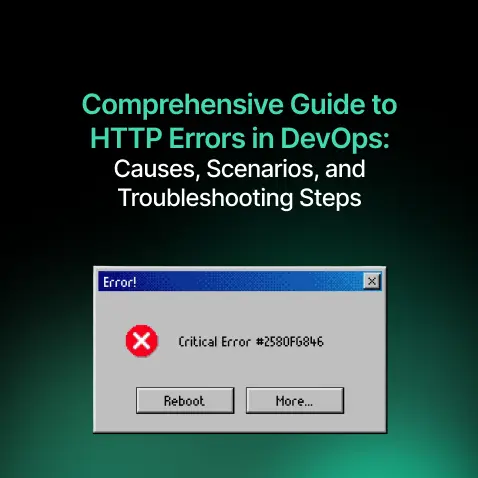
Comprehensive Guide to HTTP Errors in DevOps: Causes, Scenarios, and Troubleshooting Steps
- Blog
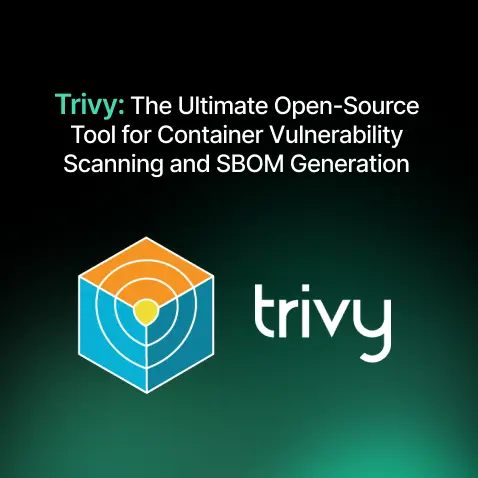
Trivy: The Ultimate Open-Source Tool for Container Vulnerability Scanning and SBOM Generation
- Blog

Prometheus and Grafana Explained: Monitoring and Visualizing Kubernetes Metrics Like a Pro
- Blog
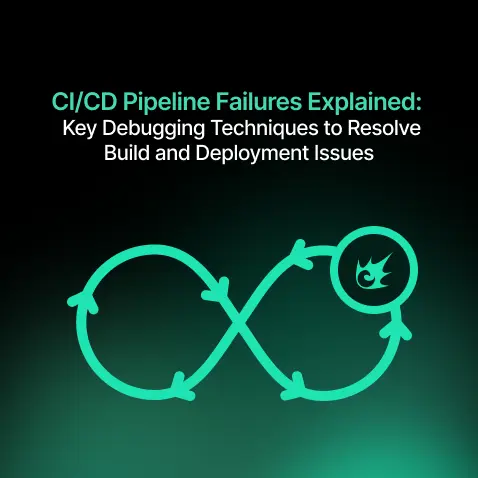
CI/CD Pipeline Failures Explained: Key Debugging Techniques to Resolve Build and Deployment Issues
- Blog
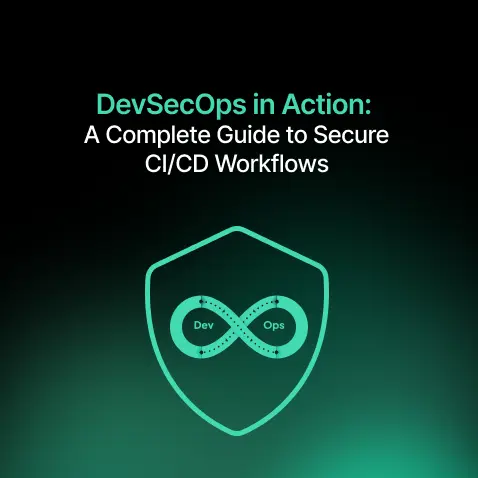
DevSecOps in Action: A Complete Guide to Secure CI/CD Workflows
- Blog
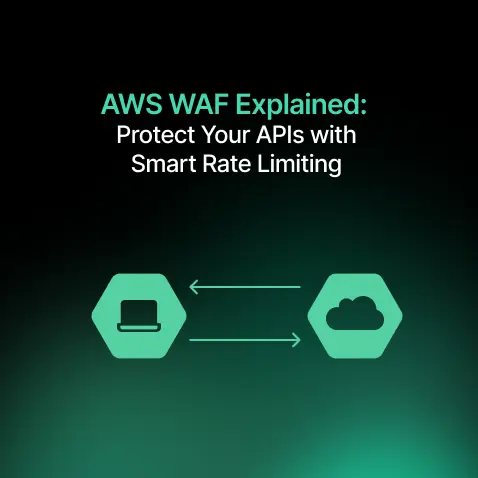
AWS WAF Explained: Protect Your APIs with Smart Rate Limiting
- Blog

